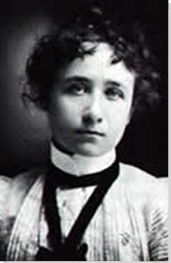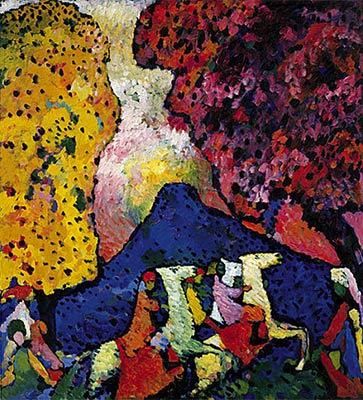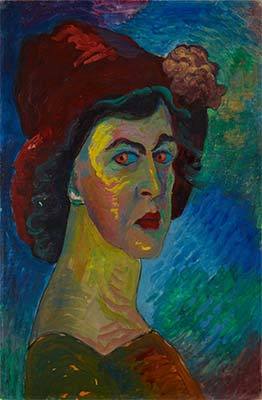Summary of Gabriele Münter
Münter's name is inextricably linked with her erstwhile colleague and lover Wassily Kandinsky, yet few would contest the view that her contribution to the canons of twentieth century modernism deserves to be recognized on its own terms. Best known as a painter and printmaker, she is usually discussed under the umbrella of German Expressionism and as a member of the famous Blaue Reiter group.
Inspired by folk art and non-western art, and known for her spontaneous approach to canvases, she produced vibrant figurative and abstract works characterized by dramatic color and loose brushstrokes. In the mid-1930s her political credentials were called into question when she submitted safe figurative works - possibly out of self-preservation - to the National Socialist project (though ultimately her art was rejected by the Nazi Party). In the post-war years her oeuvre was re-evaluated and art history has positioned her as an important link between the pre-war and post-war German avant-gardes.
Accomplishments
- Together, Münter and Kandinsky explored new aesthetic possibilities through their travels throughout Europe and North Africa. For her part, Münter started to produce Post-Impressionistic landscapes characterized by the thick and vibrant smears of paint that would become her trademark. Münter was however unique amongst her peers because of the speed at which she worked, often able to complete one or more large canvas in a single day.
- Once returned to Germany, Münter and Kandinsky founded the New Artists' Association Munich (NKVM) in 1909. Galvanized by her interactions with her newly widened peer group, Münter moved more and more towards abstraction, producing landscapes and still lifes formed of blocks of primary unmodulated colors and flattened perspective.
- In keeping with the spirit of the German Expressionist tradition of woodcutting, Münter was invested in the practices of printmaking. Her linocuts were characterized by a blending of naturalism and abstraction: her portraits, for instance, were admired for their fine detail through which she rendered her sitter who was placed against a background of abstract forms.
- Münter produced a series of still lifes - dismissed by many (male) avant-gardists as a "woman's genre" - that were unique in the context of German Expressionism. Through them, she incorporated folk objects mostly acquired on her overseas travels. Her still lifes were unique in the way "random" objects were selected because of their color and tonal relationships.
The Life of Gabriele Münter
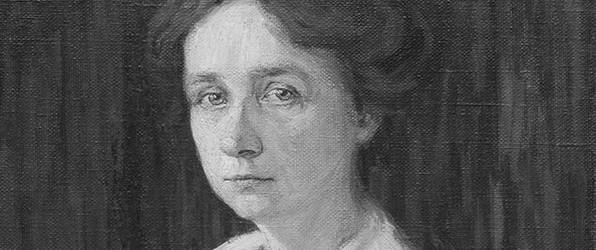
Gabriele Münter’s relationship with art phenomenon Wassily Kandinsky both shaped and overshadowed her career. When it ended, Kandinsky shot to stardom, while Münter did not pick up a paint brush for nearly ten years. “In the eyes of many, I was only an unnecessary side-dish to Kandinsky”, she said.
Important Art by Gabriele Münter
Kandinsky
Printmaking was an integral part of Münter's practice, as it was for many of the German Expressionist artists. Like the later Die Brücke studies in printmaking (though Die Brücke artists worked predominantly in woodcut), Münter rendered Kandinsky's countenance in this portrait as a thick, black, graphic outline, punctuated by flat fields of color. Scholar Shulamith Behr notes that this work was Münter's first exploration of linocuts, executed while she was in Paris. The work nods to the influence of Paul Gauguin's woodcuts, which were on display in Paris in a 1906 retrospective, as well as to the inspiration of Henri Matisse's painted color blocking. Characteristic of Münter's practice, however, is her vacillation between naturalism and abstraction. She rendered Kandinsky's portrait as an accurate depiction of her subject, and included minute details such as the texture of Kandinsky's beard hair, and the lines of his eyes as seen from behind his glasses. Against such realistic detail, Münter composed the background as abstract color fields of naturalistic shapes, each color and curved form delineated with a thick, black outline. This play with the borders between naturalism and abstraction was one way Münter illustrated the life and attributes of her portrait subject. The organic shapes and verdant tones of the background forms, for example, connected Kandinsky to the brightly colored, color field landscape pieces he was creating at the time.
Color linocut - Städtische Galerie im Lenbachhaus, Munich
Countryside Near Paris (Bei Paris II)
An early landscape, this work demonstrates Münter's move away from more naturalistic scenes, under the influence of Kandinsky's tutelage, and her increasing knowledge of French Post-Impressionist artists. Composed during one of Münter and Kandinsky's sojourns in Paris (as he attempted to put distance between himself and his first, estranged wife) Münter's plein-air landscape represents the artist's experimentation with different, avant-garde techniques. Like the Post-Impressionist pieces of Vincent Van Gogh and Paul Cézanne, Münter used quick brushstrokes and paint applied in a thick, tangible impasto to convey the barest sketches of trees, sky, road and a house.
As evidenced here, and throughout her artistic career indeed, Münter painted quickly; in the course of a single day or afternoon, she could complete one or more large-scale paintings, and she often required only a single sitting with a portrait subject. The haste of this painting's execution conveys the illusion of motion, as if the foliage undulated in the wind, and she reduced the composition's subjects to near abstractions, with the trees barely distinguishable from the outlined suggestion of a house. Yet, and quite particular to Münter, she imbued this composition with what would become her signature exploration of blocked color tonalities and graphic outlines. Though her palette here is more muted than in her later work, Münter still infused the painting with the dynamism of vibrant color juxtapositions, as she placed red, blue, white, and green planes of color adjacent to one another.
Oil on board - Brooklyn Museum, New York
Mountains in the Twilight
This painting represents an evolution in Münter's practice, as she composed this landscape by foregrounding color studies, rather than relying on the highly textured or naturalistically contoured renderings of her earlier works. She depicted the Alps in vibrant blue tonalities, intermixed with shades of a light, reddish purple, which, in turn, incorporate lighter colors of lavender and yellow as the mountain range recedes to align with the distant blue and yellow sky.
In a nod to traditional aerial perspective, the brighter, red-orange of the natural formation on the painting's right, and the striking yellow, orange, and yellow-green of the front row of four trees, indicate the objects' proximity to the viewer's field of vision, while the deep green of the trees on the base of the nearer mountain ridge suggest visible foliage. Unlike traditional aerial perspective, however, Münter composed the foreground forms in warmer colors, leaving the dominant tones for receding objects. She maintains a color vibrancy throughout with the blues, violets, and purples coming to dominate the more temperate tones of the foreground.
This interest in depicting the landscape as an interplay of color constituted Münter's early experiments with what would become the definitive Blaue Reiter aesthetic, and were a direct consequence of the artist's stay in Murnau. According to scholar Annegret Hoberg, the "intense light in the foothills of the Alps" brought out the "colors and contours of the landscape and the village in clear planes with very little atmospheric refraction." As evidenced in this 1908 landscape, Münter's exposure to these views "contributed to an emancipation" of both Münter and Kandinsky's aesthetic perception, and, as a consequence, both artists "quickly changed over from the palette knife to using the brush" to create landscape views with a "previously unseen fluent, spontaneous touch."
Oil on board - Hirschhorn Museum and Sculpture Garden, Washington DC
Jawlensky and Werefkin
This work, completed in the summer of 1909, is one of Münter's most famous compositions and depicts her friends, the artists Alexej von Jawlensky and Marianne von Werefkin. Landscapes such as this betray the influence of Jawlensky, who was well versed in the aesthetic innovations of the Parisian avant-garde, including the works of Henri Matisse and the Fauves, Paul Gauguin, and the Nabis group. Scholar Annegret Hoberg notes that this image relies on "formal simplification and clear, forceful color contrasts" bound with dark outlines which point to the artist's continuing study of Gauguin's Cloisonnism.
Though Münter included very simple color modulation - the adjacent darker and lighter greens in the field suggesting the texture of grass, and the pink and blue additions to Werefkin's white dress implying design elements and Werefkin's rounded shape - overall, she rendered each color field as a solid, planar unit, equally vibrant to its adjacent color field. Münter divided the green mountainside into three segments, bound by a black contour line, with Kelly-green vertical brushstrokes suggestive of grass at the painting's foreground, proceeding to shorter brushstrokes and a combination of yellow and green in the middle-ground, and finally a darker toned horizontal green band to imply the farthest point of the grassy plain. Similarly, Münter aligned the distant Alps with the tonalities of the sky against the backdrop of the setting sun, with a progression from pink, lavender, cornflower blue, blue-purple, to a darker, deep blue, broken only by a sharp bright line of yellow and pink sunlight. This is suggestive of the evolution of the sky's tonal range from proximity to distance from the sun.
However, somewhat atypical for a Münter portrait, she here adopts a convention from Jawlensky's work, and effaces her portrait subjects. As a consequence, Jawlensky and Werefkin's countenances become less testaments to unique subjectivities, and more oval, pink and flesh-colored shapes, akin to the discrete pink and orange-toned circular forms signifying the subjects' hands, the pink flowers in the grass, the decoration on Werefkin's hat, and the sun's rays breaking through the blue-gray clouds. In this manner, Münter better integrated her figures with the landscape, and eliminated the hierarchy between subject and setting. By using thick, black outlines to demarcate only external contours (rather than both contour and detail) such as fingers, facial features, or flower petals, Münter reduced all of her forms equally to evocative studies in color blocking.
Oil on board - Städtische Galerie im Lenbachhaus, Munich
Lower Main Street, Murnau
This landscape illustrates the lessons in simplification and pure color tones Münter absorbed from her growing collection of Hinterglasmalerei (reverse-glass paintings of folk art) and children's art. With rushed black outlines, Münter's trees, houses, and road are child-like in their simplicity. Similarly, like a child who indiscriminately applies the same color for a painting's disparate objects, or like the glass-painting artisan working from a limited palette, the artist repeated her color choices. For instance, the same yellow tinged with green and blue creates the shadows on the Murnau street as the trees bordering the road that are here reduced to blocks of imperfect shapes rather than discrete illustrations of leaves and branches.
Overall, the landscape can be read as a study in the interplay between lines and triangles. Loosely formed triangular color units delineate the trees, rooftops, distant mountain, and shadows on the street. Each triangular form is somehow bound by a linear design, whether in the blue tones of the road dividing the yellow triangles, the borders containing and outlining each form, or the vertical sides of the houses and trunks of the trees. In this manner, Münter combined her interest in reducing the visible field to a study in color contrasts, with her love for the landscape of Murnau. By rendering both man-made and natural subjects using the same, limited relationship of shapes, Münter defined all aspects of the Murnau environment as equivalent and organic.
Oil on board - Norton Simon Museum, California
Still Life with St. George
Münter's still lifes were unique contributions to the German Expressionist pantheon. Her male colleagues eschewed "women's work," as still life was considered a traditionally female genre. Indeed, of the NKVM group, Münter was the only member, aside from Alexej Jawlensky, to extensively study and contribute to the still life genre.
As with this example, Münter's still lifes often incorporated the folk objects she and Kandinsky collected. This work includes a culturally diverse grouping of objects, such as a Russian Madonna and Child, and what appears to be a European figurine. These objects were not selected for their thematic coherence. Scholar Reinhold Heller notes that Münter's still lifes "assault[ed] the commonality of objects" as they "grant[ed] significance to the mundane" in the artist's privileging of "formal or abstract values prevail over motifs and subject matter."
Though this still life is an exception, Münter, in fact, often entitled her still lifes not based on content, but rather according to the assembled objects' dominant color. Indeed, though not constituting the painting's title, color fields unite the subjects of Still Life with St. George. Loosely defined fields of purple-pink or grey-blue in a variety of tones create a flattened perspectival space, and elide the boundaries between the backdrop wall and the table, and between foreground and background, such that each object or painted work exists on the same compositional plane.
Subject matter was not, however, unimportant in Münter's still lifes. In particular, her inclusion of an image of St. George is noteworthy. St. George was the patron saint of both Moscow and Murnau, an omnipresent figure in the Hinterglasmalerei tradition, a presence in Kandinsky's early experiments in increasingly abstracted form, and dominated the cover of the 1911 Der Blaue Reiter almanac. St. George represented salvation and a moment of renewal, which the artists felt exemplified the purifying spiritual power of the new Expressionist aesthetic. Münter's decision to showcase the image of St. George in the context of a still life assemblage of her folk art collection should be interpreted not only as a testament to the most fruitful aesthetic sites of inspiration - the Murnau landscape and folk art models - but also as a reflection of the philosophical and aesthetic discussions she and her peers had and were having about art's future, and the nature of progressive art.
Oil on board - Städtische Galerie im Lehnbachhaus, Munich
Still Life with Vase, I
Münter viewed her artistic breakthrough as the moment she began to perceive the world more abstractly, emphasizing the essence of form rather than what, and how, it might signify. This still life represents the progression of this idea in her work, as the inanimate objects are predominantly unidentifiable, lost behind an interplay of curvilinear outline; short, choppy brushstroke; and dynamic fields of contrasting colors.
Unlike her earlier still lifes, in which objects maintained a formal integrity, Still Life with Vase, I dissolves the borders between object and ground, as the bare outline of a flower bud and stem could equally be confused with similar circular or linear forms throughout the composition. As with Kandinsky's studies from around and immediately prior to this time, the connection between line and color leads the spectator through Münter's painting. A thin, black, graphic linear shape with a circular end directs the viewer from the bottom up to the midsection of the composition, its primacy underscored by the contrast created by the black against a vibrant yellow color field. Vertically oriented color planes similarly originating from the painting's bottom foreground and up to the middle continue the sweeping arc of the initial, black line, as the viewer's gaze is then directed back downwards with the curve of the still life flowers and with a thick, white color plane concluding at the painting's base. Unlike the work of her partner Kandinsky, here, coloristic and linear agency in Münter's painting is totalizing; this is an all-over composition, with the briefest incursions of space between the brushstrokes unable to distract from the effect of constant optical motion.
Oil on board - The San Diego Museum of Art
Meditation
Münter composed many portraits of solitary female sitters, each a study, in scholar Annegret Hoberg's description, of the "psychological states of waiting, hoping, thinking or suffering." Here, Münter combined aspects of her three preferred artistic genres - portraiture, still life and landscape - to depict her favorite model and friend, Gertrude Holtz. Holtz sits, her finger to her lips, her eyebrows raised, and her gaze outside the picture plane to illustrate the external signifiers of intense contemplation.
The entirety of the composition is rendered with thick, black outlines, but the contrast between cooler, dark tones and vibrant, warmer tones, as well as the contrast between signals of interior, man-made objects and products of nature, illustrate the fruitfulness of intellectual inquiry. Münter depicts Holtz as a study in black and white, with her gloved white hand a bright spot against a body united through outline, hair, eyes, and dress by dark, black color blocks. These same colors echo in the darkness of the interior, and the white, blue, and blackness of the table. A deep violet shadow outlining Holtz's eyes connects the sitter to the table edge and the pops of color in the dark background. Yet, Münter uses color to indicate the vibrancy of the sitter's thought or imagination. From Holtz's head appear to spring a bouquet of bright violet flowers, aligned with a flowering branch seemingly outside the window. Behind Holtz's head, bright oranges, reds, and yellows from the outside world echo in the apples on the table and the shade of the lamp. With these decisions, Münter illuminates Holtz's inner life, with thought and intellectual engagement literally animating the world around her. Also in this manner, she connects coloristic vibrancy and intellectual engagement to the natural world as equally powerful sources: tellingly flowers, literally spring from Holtz's head as a visual surrogate for mental inspiration.
In her preference for the evocative potential of outlined color planes, this work betrays the influence of Swedish avant-garde, and especially two former students of Henri Matisse, and founders of the Swedish Expressionist movement, Sigrid Hjertén and Isaac Grünewald. Münter befriended the pair while in Sweden during the First World War and their influence is here married with Münter's ongoing interest in Hinterglasmalerei technique. Indeed, Hoberg notes that Münter's reference to Hinterglasmalerei often occurred with her use of "powerful, darkly luminous colors" that were then then "applied flat and edged with dark contours."
Oil on canvas - Städtische Galerie im Lehnbachhaus, Munich
Winter Scene
Münter maintained her interest in landscape and still life even under National Socialist artistic restrictions. Her paintings of flowers and landscapes helped protect her from the scrutiny her exhibited works received under National Socialist policy (which condemned so-called "degenerate" avant-garde art). This work continues Münter's exploration of color and linear forms in nature, but presents a less abstract and more naturalistic front, a strategy she would employ until the conclusion of the Second World War. Innocuously titled, this landscape is a study in the various color tonalities of snow - alternately white, blue, pink, yellow, or purple - as it blankets, and then transforms, winter trees into abstracted linear forms. In contrast to her earlier landscapes, the violet-blue of the mountains are depicted as discrete from the lighter-blue sky, rather than as equivalent color field tonal experimentations. The inclusion of snow on the distant mountaintops provides a more naturalistic perspective on the landscape too.
Oil on board - The Solomon R. Guggenheim Museum, New York, New York
Biography of Gabriele Münter
Childhood
The youngest of five children, Gabriele Münter was born in Berlin in 1877. Her parents, Carl Friedrich Münter and Wilhelmine Scheuber, had met and married in America. Gabriele Münter later recalled how her father, a dentist, had initially moved to America in 1848 to avoid arrest for the promotion of liberal and revolutionary ideas. Following the outbreak of the American Civil War, however, the family returned to Germany (in December 1864). Münter's childhood was "absolutely ordinary," according to scholar Reinhold Heller, and she "grew up in the comfort and protection of a well-to-do, German middle-class home during the era of peace and relatively prosperity" in the first decades of the German Empire.
In 1886, Münter's father passed away. Her mother's death followed in 1897, leaving Münter orphaned by the age of twenty. With her sister, Emmy, Münter took her inheritance and embarked on a two-year journey across America where she and Emmy participated in cattle drives across Texas, Arkansas and Missouri. The sisters returned to Germany in 1900 where Münter, desirous of pursuing a career as an artist, and of documenting the American landscape and people she had encountered, started to finesse her drawing and painting skills.
Early Training and Work
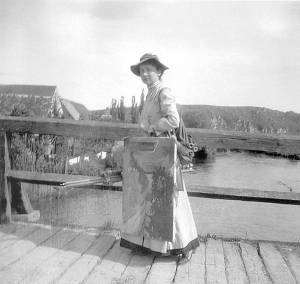
Münter began her artistic training in Düsseldorf shortly before the death of her mother. She took private lessons with the painter Ernst Bosch, and joined the Ladies' School of the Düsseldorf Arts Academy. In the words of scholar Reinhold Heller, Münter's family hoped that her pursuit of an artistic career would bring "direction and order into her life" and would rescue her "from aimlessness." Between 1900 and 1902, Münter studied with a number of artists in a variety of mediums, including sculpture, drawing, and painting. In Munich, she trained with artists at the Phalanx School, where she studied under Wassily Kandinsky, at that time also the school's chair. Münter thought that Kandinsky had, unlike previous instructors, took her artistic ambitions seriously, and she declared that he "regarded me as a consciously striving human being." The two soon developed an intimate relationship, and Kandinsky, "uncomfortable" with the co-presence of Münter and his first wife Anja, asked her to withdraw from his class. By 1903, Münter and Kandinsky had entered into a secret engagement, and planned to wed after Kandinsky secured a divorce. Though Kandinsky was officially divorced in 1911, to Münter's disappointment, the pair never married.
Before then (between 1904-07) Münter and Kandinsky travelled throughout Europe and North Africa together. The couple's peripatetic existence was determined not by a need for adventure or new painting subjects, but rather by Kandinsky's desire to, in scholar Annegret Hoberg's words, "get away from the difficulties of his private situation," and to test drive his relationship with Münter. Her itinerant years resulted in new aesthetic breakthroughs, with Münter's painting now composed of thick, Post-Impressionistic daubs of paint and naturalistic landscapes. By 1907, she began work in Paris, and exhibited paintings at the Salon des Indépendants and prints at the Salon d'Automne. The following year, the artist exhibited eighty paintings at her first solo exhibition at the Kunstsalon Lenoble in Cologne.
Mature Period
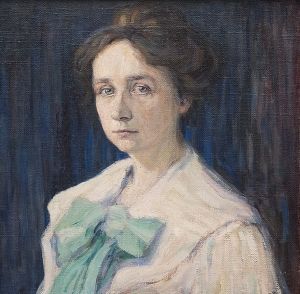
The collaborative relationship, and reciprocal artistic influence of Münter and Kandinsky, came to define Münter's mature period. In 1908, Münter and Kandinsky moved to Munich, where they connected with Russian emigres Marianne von Werefkin and Alexej Jawlensky. 1908 also marked a trip by the two couples to Murnau in the foothills of the Bavarian Alps, a vacation which ignited a lifelong connection between Münter and Murnau. In 1909, Münter purchased a house in the region, known locally as the "Russians' House," which she hoped would eventually serve as a museum to house her art. In Murnau, Münter and Kandinsky entertained avant-garde luminaries such as Franz Marc, August Macke, Jawlensky, von Werefkin, and Arnold Schoenberg. It was among Münter and Kandinsky's new, and expanded artistic circle, that Kandinsky began his investigations of abstract painting, and Münter had what she called her "great leap" in her artistic evolution. Inspired by her surroundings, and influenced by her colleagues, Münter painted with a new fervency, and created up to five oil studies a day, all defined by formal simplicity, blocks of bold unmodulated colors, and a flattened perspective.
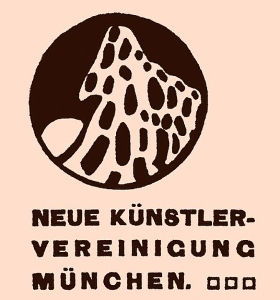
Münter, with Kandinsky, founded the New Artists' Association Munich, NKVM, in 1909, which promoted and exhibited international avant-garde art by the likes of Georges Braque, Pablo Picasso, and André Derain. At the NKVM launch exhibition, Münter's work was favorably reviewed, with one critic describing her woodcuts as "first class, completely lovely" and "full of genuine lyrical magic." Münter duly began collecting folk art, specifically the reverse-glass paintings called Hinterglasmalerei; her interest in the medium encouraged Kandinsky to follow.
The NKVM served as a way-station en route to what would become the most notable avant-garde collective of her career, the 1911 establishment of Der Blaue Reiter German Expressionist group and the creation of its almanac with Kandinsky, Franz Marc, Marc's wife Maria, and Alfred Kubin. Inspired by the dramatic color and loose brushstrokes of the Fauves and the Parisian avant-gardes; the return to a Germanic print tradition and thickly outlined forms of the Die Brücke group; the Wagnerian ideal of a gesamptkunstwerk; studies in synesthesia; and the inspiration of international folk art and non-Western art; Münter and her Blaue Reiter colleagues created evocative and innovative works of art.
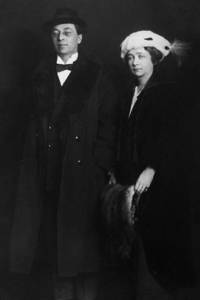
When the First World War broke out in 1914, she and Kandinsky fled to Switzerland. However, the War provided a natural break for the two artists who lived apart for the majority of the conflict's duration. By September 1916, Kandinsky, by now in Russia, began a relationship with seventeen-year-old Nina Andrejewska. Nina would become his second wife in 1917, though Münter only learned of their marriage in 1920. Münter and Kandinsky were never to meet again, though Münter repeatedly attempted to contact him in the 1920s to retrieve works which were still in Kandinsky's custody. Scholar Annegret Hoberg describes Münter's pursuit as a symbolic quest for "moral amends" rather than "material compensation." Indeed, as part of the restoration of her property, Münter forced Kandinsky to admit that the two existed in a "marriage of conscience" if not in legal status, and, in 1925, she began a text entitled Confession and Accusation, which excoriated Kandinsky for ill-treatment.
Münter's aesthetic remained solidly aligned to the German Expressionist style throughout this period and she continued to exhibit prominently - especially in Scandinavia and Germany - following her separation from Kandinsky. She exhibited in Stockholm and connected with the Swedish avant-garde in 1917, opened her largest exhibition to date in Copenhagen in 1918, and exhibited in 1919 in the Der Sturm gallery in Berlin. By 1928, her reputation now established, Münter began a relationship with art historian Johannes Eichner which was to last the remainder of her life.
Late Period
The artist's later career was circumscribed by the artistic demands of National Socialism. By 1931-33, Münter had settled in Murnau with Eichner, and mounted a retrospective exhibition which travelled for two years throughout Germany. However, her progressive art did not sit well with Adolf Hitler's preferred aesthetic. Eichner encouraged the artist to change her style for greater market viability, and Münter then created innocuous still lifes and portraits to generate money or to barter in exchange for food. Whatever her political beliefs may have been, she willingly generated work for National Socialist exhibitions. Münter submitted work for a 1936 Berlin Olympics Nazi project, showed two paintings in the travelling exhibition Adolf Hitler's Streets in Art, and submitted work to the 1937 Great German Art Exhibition (though her work for this exhibition was rejected). However, despite these attempts, Münter was never fully accepted by the Nazi artistic program and her art was condemned by Nazi officials in 1937. Münter was subsequently careful to hide her collection of Blaue Reiter art in her basement for fear of seizure.
After the Second World War, cultural theorists celebrated those artists and movements denigrated by Hitler as a symbolic statement of the regime's fall. Münter therefore became a sought-after link between the post-war and the pre-war avant-garde era. According to scholar Reinhold Heller, throughout the 1950s Münter's work was then exhibited "uninterruptedly, with at least one [show] a year, in German museums and art galleries." Münter received the Culture Prize for Painting in 1956 and the Gold Medallion of Honor of the City of Munich in 1957. That year she also donated much of her Blaue Reiter collection to the Städtische Galerie in Munich. Eichner died in 1958, leaving Münter to live the remainder of her days at Murnau alone, but with the sustained attention of art historians and critics. Münter passed away at Murnau on May 19, 1962, at the age of eighty-five.
The Legacy of Gabriele Münter
Though Münter sold just a few paintings in her lifetime, in the words of scholar Annegret Hoberg, Gabriele Münter was the "best-known female exponent of German Expressionist painting." Indeed, Münter helped develop and instigate the Expressionist and Blaue Reiter aesthetic, and, ultimately, through her preservation of Blaue Reiter art from Nazi persecution, became one of the Expressionist movement's most important unofficial historians.
It is true that Münter's art and life were inextricably tied to the outsized presence of Kandinsky, and some scholars, such as Hoberg, attribute periods of decreased activity or slow innovation to the psychological damage inflicted by the couple's tumultuous relationship. More than once, in Hoberg's words, Münter "subordinated her artistic development to the circumstances of her private life." Scholar Shulamith Behr has noted that it has "taken years for Münter to emerge from the shadow of Kandinsky," due as much to historiographic misogyny which privileged male Expressionists, as due to the fact that Kandinsky was a far more prolific writer and self-publicist, whose landmark texts secured "his place in the history of modernism." However, it would be a diminishment of Münter as an artist - and as a woman - to view her work solely through the lens of her personal relationship(s). Münter was an innovative, important avant-garde artist in her own right, who was recognized as such and celebrated with prominent exhibitions in her time and posthumously. She was far more than Kandinsky's muse, and, in some instances, as with her progression towards abstraction and her interest in Hinterglasmalerei, her eye and her experimentations preceded those of her more famous paramour.
Influences and Connections

-
![Wassily Kandinsky]() Wassily Kandinsky
Wassily Kandinsky -
![Paul Gauguin]() Paul Gauguin
Paul Gauguin -
![Henri Matisse]() Henri Matisse
Henri Matisse -
![Vincent van Gogh]() Vincent van Gogh
Vincent van Gogh ![Alexej von Jawlensky]() Alexej von Jawlensky
Alexej von Jawlensky
-
![Marianne von Werefkin]() Marianne von Werefkin
Marianne von Werefkin - Michael Stein
-
![Art Nouveau]() Art Nouveau
Art Nouveau -
![German Expressionism]() German Expressionism
German Expressionism -
![Jugendstil]() Jugendstil
Jugendstil -
![Fauvism]() Fauvism
Fauvism ![Synthetism]() Synthetism
Synthetism
- Johannes Eichner
-
![German Expressionism]() German Expressionism
German Expressionism - Post-War German Neo-Expressionism
